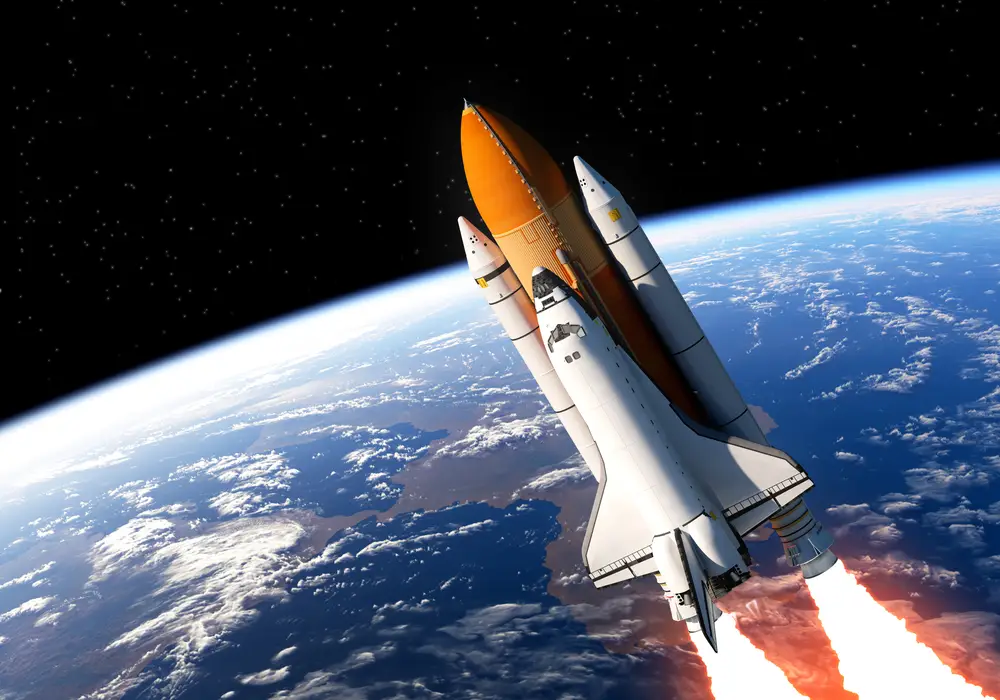One of the objectives of a recent trip into space was to determine the long-range effect on “the mind, body and spirit” of the travelers into this last frontier. The agency which supervises all government-sponsored trips into space – The National Aeronautics and Space Administration (NASA) – recently announced the safe return of astronaut Scott Kelly who had spent the last year living in the Space Station. This is longer than anyone else had previously done.
The ramification of this trip – a medical experiment, in fact – is fascinating for the scientists at NASA and the spine specialists at Texas Back Institute. Why? According to news reports, including this one from NBC, Scott Kelley’s body changed while he was living in outer space.
In addition to other possible effects of the weightlessness of outer space (yet to be determined), Kelly appears to have grown about 2-inches during this period. This fact is corroborated by a comparison with Scott’s brother, Mark, who is an identical twin and thus has the exact genetic makeup.
This medical experiment, with one brother acting as the test subject and the other acting as the “control,” is critical to devising a medical and physical regimen for astronauts who, on future trips to planets in this solar system such as Mars, will be required to live in these conditions for sometimes decades.
Before discussing these myriad medical mysteries, the obvious first question is clearly begged. Did the effects of 1-year of weightlessness, the closed quarters or other factors cause Scott Kelly to grow an additional 2-inches? For the answer to this, Texas Back Institute spine surgeon Dr. Rey Bosita was asked for his professional opinion.
Did This Astronaut Grow Taller in Space?
“First of all, I would like to express my gratitude to astronaut Kelly for his willingness to spend a year of his life in outer space to do research for NASA. With regard to his increase in height, most likely, the discs in his back expanded some, and I am very interested to know how long he will remain taller,” noted Dr. Bosita. “He was in a weightless environment and there was no gravity pulling his body weight down onto his spine. The weightless environment probably reduced the compression on the discs in his spine, and so he ‘grew’.
“In a human spine, the discs are soft: they can get bigger and smaller and they have elastic properties,” he said, “whereas, the bone is hard. This ‘growth’ of 2-inches is most likely the result of disc expansion. ”
“I’m sure that NASA is studying this in depth. This will, no doubt, involve a battery of x-rays and MRI’s which will measure the size of every disk and bone to the millimeter to determine exactly what happened to the cartilage and bones all over his body.”
Other Effects of Weightlessness
Bone deterioration is possible from this extended trip into space. What is it about weightlessness that causes bone deterioration?
“Astronaut Kelly’s bones are alive,” Dr. Bosita said. “And human bones will remodel and react to the stresses that are placed upon them. Let’s use a broken arm as an example. When the bone breaks, it ‘wants’ to heal and sometimes that bone can grow back a little longer (than its original length). While the bone is in a cast during the healing process, which is as close to weightlessness as it can get on earth, it actually loses some muscle mass and bone density.
“In a weightlessness environment, there is less pressure placed upon the bone,” he noted. “Because of this, there would be a tendency for these bones to lose some density.”
The news reports also noted the back muscles and leg muscles might weaken over this long period, perhaps leading to fall-related injuries. Is this going to be a problem in long space journeys?
“First of all, I can’t imagine living for a whole year in the Space Station, basically being able to fly around the capsule with minimal effort,” he said. “But then, when the astronaut comes back to earth, he has to walk just like the rest of us. He would feel incredibly heavy because his muscles are not accustomed to dealing with the stress that is placed upon them by gravity.”
“In a weightless environment, the muscles don’t have to work very hard in order to make the body move. Back on earth, His muscles must be retrained in order to deal with gravity.”
The preliminary report noted that calcium in the body is also decreased by weightlessness. Why does this happen?
“Again, when the bone is in a weightlessness environment, it is stressed a lot less,” he noted. “The body responds by saying ‘I’m not being stressed as much and I don’t need to MAINTAIN the bone density in my legs and spine.’”
Before Taking off for Mars, What’s the Plan?
“If we were going to send astronauts to Mars, leave the solar system, or put someone in zero gravity indefinitely, there would have to be weight-bearing exercises, proper nutrition, and proper medical protocols to maintain the astronauts’ bone density,” Dr. Bosita said. “If the astronauts spend 5 to 10 years or more getting to another planet, they will have to deal with gravity again at some point.”
“The last thing we would want is to have an astronaut, a couple of light years away from earth, sustaining a BAD fracture due to osteopenia or osteoporosis caused by weightlessness. That would be a big problem!”
To hear the complete interview with Dr. Bosita, listen to the Texas Back Institute podcast: SpineTalk.
While you are most likely not traveling into outer space in the near future, you can benefit from some of the best spine specialists on the planet at Texas Back Institute. If you have back pains, Contact Us to set an appointment.


